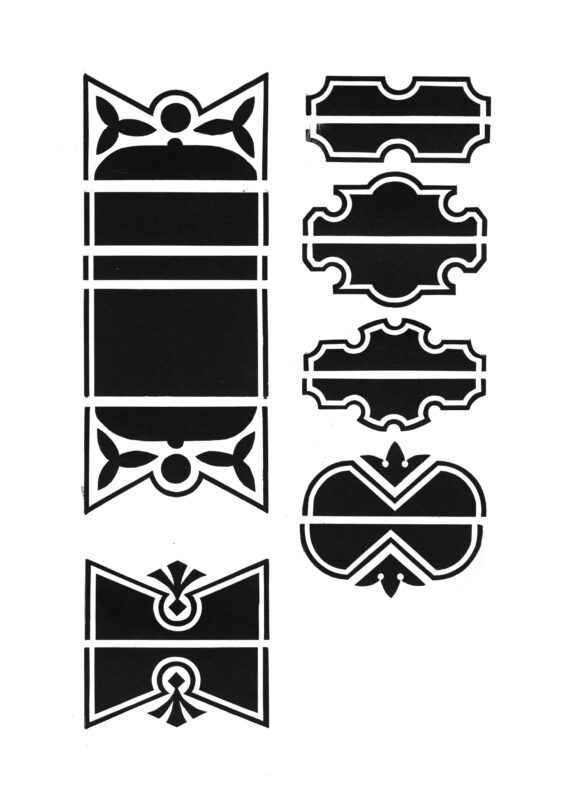Streamer Borders
24–line
Box 175
Streamer end pieces & border components
Single-Groove Streamer Borders
The William H. Page Wood Type Company
24–line
These borders were first shown in the 1882 Specimens of Wood Type and Borders Manufactured by the Wm. H. Page Wood Type Co., Norwich, Conn.
Streamers were a variation on Reverses that included terminating ornamental blocks, which produced a finished shape with the visual appearance of a banner, flag, or pennant holding reversed letters. Reverses were wood letters cut into a decorative or solid ground to give the semblance, when printed, of a white or reversed letter on a colored field.
Edwin Allen showed Black Ground, the first Reverse design in wood, in George Nesbitt’s 1838 specimen catalog. J.G. Cooley & Company showed a kind of chromatic reverse around 1859 as a single color-filled border used as a background for type. Hamilton & Katz showed a similar design in 1884. Kelly noted in American Wood Type 1828–1900 that “the printer could assemble [the borders]…print in color, and then overprint in black with conventional wood types.” The first fully realized typographic streamers were introduced as wood type by William H. Page & Company in the 1874 Specimens of Chromatic Wood Type, Borders, &c.
Because it lacks corresponding reversed letters, the streamer border shown here would have been used as background for positive type printed as a second color.
